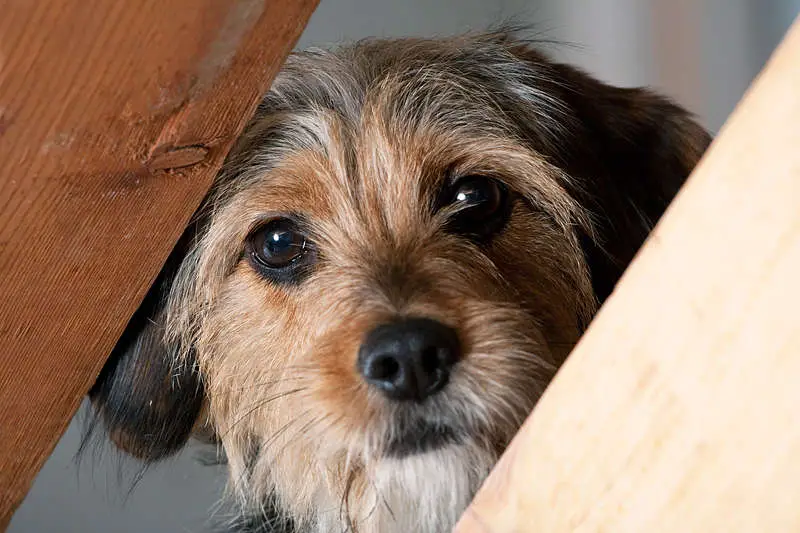Dogs experience fear. Sometimes, they encounter events that make them get fearful and change the way they act. Maybe they were mistreated by humans or attacked by other bigger dogs. Any of these things can make them into a nervous dog.
Signs of a nervous dog include excessive energy, excessive barking, pacing, trying to escape from your presence, hiding, tail between the legs, whimpering, panic attacks, a show of destructive behavior and so on.

6 ways to handle a scared and nervous dog
Your dog is scared and getting them to be less fearful is no smooth ride. It is going to take time and a lot of effort. Putting in the effort could be the best thing you will ever do for your dog though. It will be so self-rewarding that you won’t even remember the hustle.
1. Be a leader
Your dog views you, the owner, as leader of the pack. Don’t let them down, lead always.
Show them that everything is okay and they can trust you to take care of them. Portray confidence and show that you have any situation that arises under control.
If your dog senses that you are afraid, they will instinctively take over as the leader of the pack. This behavior gets even worse since they try to lead themselves while they are still nervous and fearful. That might result in unpleasant scenarios such as your dog biting someone or other dogs.
2. Do not pet them too much
Most people will instinctively pet and over-comfort a scared or nervous dog. Dogs use associative thinking, and they know that petting is a sign of affection, i.e., a reward.
So they interpret that they are getting rewarded for being afraid. Avoid showing too much love; instead show courage, bravery, and leadership by showing them that the thing that scares them isn’t worth fearing.
If your dog is skittish around children, for example, make a point of showing them that children are welcome and include the dog when you are all playing ball or any other dog-friendly game.
3. Give treats
Give your dog a few treats to help ease and distract them from the tension they are experiencing. However, do not give them too many goodies in the hope of curbing their fear.
Not only will it not work, but it also will be counterproductive because they will think you are rewarding them for their anxiety.
You can use the treats for training, such as rewarding your dog when they manage to calm down or when they obey instructions.
That will motivate them to keep calm for longer even in the face of whatever frightens them most.
4. Avoid direct eye contact
Try as hard as you can to avoid direct eye contact with a scared or nervous dog. Eye contact makes them think you want to challenge them, which will be their cue to revert to flight or protective mode.
Act as normal as you possibly can, and make sure you look away from the dog but at the same time, don’t let them think they intimidate you.
5. Careful handling of the dog
Be extra cautious when handling a fearful dog since they will act differently from their normal state.
Do not leave them alone with children, who can get hurt if the animal reacts defensively.
Also, approach such dogs from the side, not from the front. A frontal approach signifies a challenge, which is not good for such a dog.
Don’t bend over to touch them, and avoid making sudden movements that may startle them.
Try to speak as calmly and as softly as you possibly can to the scared dog and always respect their space, don’t intrude rudely.
6. Quietness and calm
Make sure the dog’s environment is quiet and calm, no loud noises. This kind of situation is suitable for counter-conditioning the dog against the fear-inducing stimuli.
Don’t physically punish them as it will induce more fear and don’t leave them alone for too long.
Conclusion
All in all, remember it’s going to be a tough and long journey with a nervous dog. Revel in the small victories that you achieve.
Giving up shouldn’t be in your equation and hopefully, in the end, it will be the most satisfying gift that you can give your dog.
